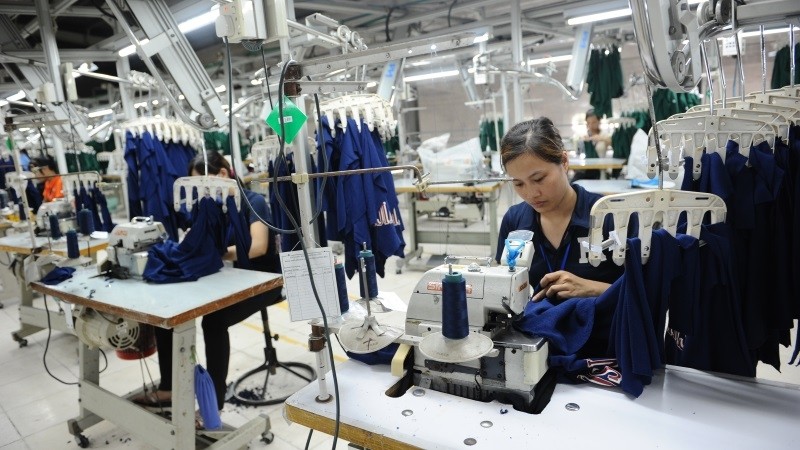On August 28, the joint venture between Wagan, GHN Group and Masters Depot, and Vietnam’s Tin Thanh Group worked with the Dung Quat Oil Refinery in the south-central province of Quang Ngai, in the hopes of beginning the second-phase expansion of the project.
As planned, the expansion will be completed in 2021, with the refinery’s capacity to be increased by more than 30%, to churn out about 8.5 million tonnes of EURO-standard products every year.
State-run PetroVietnam’s Binh Son Refining and Petrochemical Joint Stock Company (BSR), which operates the refinery, reported that in the first 7 months of this year, the plant’s crude oil output reached 4.14 million tonnes, hitting 66% of the whole year’s plan.
The firm also found buyers for more than 4.1 million tonnes of products, equalling 66% of the whole year’s plan. Total revenue reached VND66.49 trillion (US$2.955 billion), 47% higher than the seven-month plan and equal to 85% of the entire year’s plan. BSR’s after-tax profit hit VND3.597 trillion (US$159.86 million), exceeding its seven-month plan by 72%.
In another case, over the past few months, the Nghi Son Refinery and Petrochemical Plant (NSRP) in the northern central province of Thanh Hoa has begun its commissioning stage.
As planned, the factory will increase its commissioning capacity to 100% in early September, and will officially begin commercial operations in November. It is expected that in 2018, NSRP will import six million tonnes of crude oil, and produce and consume four million tonnes of products.
In the first 7 months of this year, NSRP largely contributed to a 28% increase in the industrial production of Thanh Hoa.
According to the General Statistics Office (GSO), over the first 8 months of 2018, BSR and NSRP have significantly contributed to a big rise in the economy’s manufacturing and processing sector, which holds 80% of the country’s industrial growth.
During this period, the economy’s index for industrial production increased 11.2%, the highest eight-month rise since 2011.
According to the Ministry of Planning and Investment (MPI), since 2017, some other big projects have come into operation, such as the Republic of Korea’s Samsung and Taiwan’s Formosa. Specifically, while Formosa has put its second furnace into operation, with annual capacity of 3.8 million tonnes, Samsung launched new flagship products of Galaxy S9 and S9 Plus in the first half.
To August, Formosa largely contributed to a 121.4% climb in industrial production of the central province of Ha Tinh where it is located.
The Ministry of Planning and Investment expect that in the second half of the year, a number of new big projects will come into operation, which will serve as a fresh impetus for economic growth, and especially help the economy reach its growth target of 6.7% this year.
It is expected that in the time to come, Hoa Sen Group will also likely put into operation its new iron sheet manufacturing chain, with an annual capacity of 350,000 tonnes.
Also in this year’s first eight months, Vietnam saw nearly 87.500 newly-established enterprises, registered at US$38.87 billion, up 2.4% in the number, and 6.9% in capital, year-on-year.
Further fuelling growth, operational firms increased their investment capital by US$74.3 billion. Thus, the total new capital inserted into the economy in this year’s first eight months hit US$113.17 billion.
International optimism
Recently, the International Monetary Fund (IMF) concluded its annual consultation with Vietnam, releasing its latest forecast of 6.6% in economic growth for the country in 2018, slightly lower than the 6.7% rate targeted by the government.
According to the IMF, one of the key drivers for Vietnam’s high growth is an inflow of disbursed foreign direct investment (FDI), which hit $17.5 billion last year, up 10.8% against 2016, and up 40% compared to 2014.
The GSO reported that in the first 8 months of the year, the figure reached US$11.25 billion, up 9.2% year-on-year.
“Vietnam’s dynamic, highly open economy continues to perform well. The solid performance is aided by macroeconomic and financial stability, stepped up economic reforms, and inflows of FDI which are enabling structural transformation and are raising potential growth,” said an IMF consultation report on Vietnam’s economic performance, “The strong economic momentum is expected to continue.”
The IMF said Vietnam boasts a long track record of strong inclusive growth. The economy is “one of the most dynamic in East Asia, with growth averaging 6.5% a year during the 2000–2016 period.”
A competitive FDI manufacturing sector generates a large trade surplus (15.5% of GDP). It is dominated by electronics multinationals and apparel producers, like Intel, Samsung, LG, Sumitomo, Pouchen, and Texhong, which are integrated into the broader Asian supply chains, and engaged in final assembly and processing, although higher value-added activities are also increasingly located in Vietnam.
The National Assembly has set a target of reaching total registered FDI of US$27.5-28.5 billion for the whole of 2018, of which disbursed FDI will account for US$21 billion, far higher than the $17.5 billion disbursed in last year. Total stake acquisitions by FDI firms will hit US$3.5 billion this year.
Recently, the World Bank issued its latest forecast for Vietnam’s economic growth, which is expected to be 6.8% this year – up from 6.5% in the bank’s previous projection, largely thanks to a recovery in FDI and domestic private firms, in addition to a cyclical increase in global demand.
Vietnam economy fuelled by big projects, with upbeat outlook under international eyes
With the coming into operation of new major foreign-invested projects which will fuel domestic production, Vietnam’s economic outlook has enjoyed optimistic assessments from several high-profile international organisations.

|
| Driven by large scale projects, the economy is expected to continue to grow (Photo: Thu Ha) |















